RabbitMQ订阅者模式
订阅者模式
一个生产者,多个消费者
每一个消费者,都有一个独立的队列
生产者没有将消息直接发送到队列,而是发送到了交换机
每个队列都要绑定到交换机
生产者发送的消息,经过交换机,到达队列
实现,一个消息被多个消费者获取的目的
注意
消息发送到没有队列绑定的交换机时,消息将丢失
因为,交换机没有存储消息的能力,消息只能存在在队列中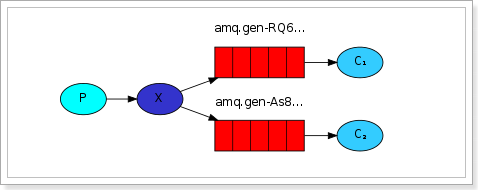
Send
生产者
package cn.itcast.rabbitmq.ps;import cn.itcast.rabbitmq.util.ConnectionUtil;import com.rabbitmq.client.Channel;import com.rabbitmq.client.Connection;public class Send {private final static String EXCHANGE_NAME = "test_exchange_fanout";public static void main(String[] argv) throws Exception {// 获取到连接以及mq通道Connection connection = ConnectionUtil.getConnection();Channel channel = connection.createChannel();// 声明exchangechannel.exchangeDeclare(EXCHANGE_NAME, "fanout");// 消息内容String message = "消息已经修改,商品id=1000";channel.basicPublish(EXCHANGE_NAME, "", null, message.getBytes());System.out.println(" [x] Sent '" + message + "'");channel.close();connection.close();}}
Recv
消费者1
package cn.itcast.rabbitmq.ps;import cn.itcast.rabbitmq.util.ConnectionUtil;import com.rabbitmq.client.Channel;import com.rabbitmq.client.Connection;import com.rabbitmq.client.QueueingConsumer;public class Recv {private final static String QUEUE_NAME = "test_queue_work";private final static String EXCHANGE_NAME = "test_exchange_fanout";public static void main(String[] argv) throws Exception {// 获取到连接以及mq通道Connection connection = ConnectionUtil.getConnection();Channel channel = connection.createChannel();// 声明队列channel.queueDeclare(QUEUE_NAME, false, false, false, null);// 绑定队列到交换机channel.queueBind(QUEUE_NAME, EXCHANGE_NAME, "");// 同一时刻服务器只会发一条消息给消费者channel.basicQos(1);// 定义队列的消费者QueueingConsumer consumer = new QueueingConsumer(channel);// 监听队列,手动返回完成channel.basicConsume(QUEUE_NAME, false, consumer);// 获取消息while (true) {QueueingConsumer.Delivery delivery = consumer.nextDelivery();String message = new String(delivery.getBody());System.out.println(" [x] Received '" + message + "'");Thread.sleep(10);channel.basicAck(delivery.getEnvelope().getDeliveryTag(), false);}}}
Recv2
消费者2
package cn.itcast.rabbitmq.ps;import cn.itcast.rabbitmq.util.ConnectionUtil;import com.rabbitmq.client.Channel;import com.rabbitmq.client.Connection;import com.rabbitmq.client.QueueingConsumer;public class Recv2 {private final static String QUEUE_NAME = "test_queue_work2";private final static String EXCHANGE_NAME = "test_exchange_fanout";public static void main(String[] argv) throws Exception {// 获取到连接以及mq通道Connection connection = ConnectionUtil.getConnection();Channel channel = connection.createChannel();// 声明队列channel.queueDeclare(QUEUE_NAME, false, false, false, null);// 绑定队列到交换机channel.queueBind(QUEUE_NAME, EXCHANGE_NAME, "");// 同一时刻服务器只会发一条消息给消费者channel.basicQos(1);// 定义队列的消费者QueueingConsumer consumer = new QueueingConsumer(channel);// 监听队列,手动返回完成channel.basicConsume(QUEUE_NAME, false, consumer);// 获取消息while (true) {QueueingConsumer.Delivery delivery = consumer.nextDelivery();String message = new String(delivery.getBody());System.out.println(" [x] Received '" + message + "'");Thread.sleep(10);channel.basicAck(delivery.getEnvelope().getDeliveryTag(), false);}}}
启动发送者
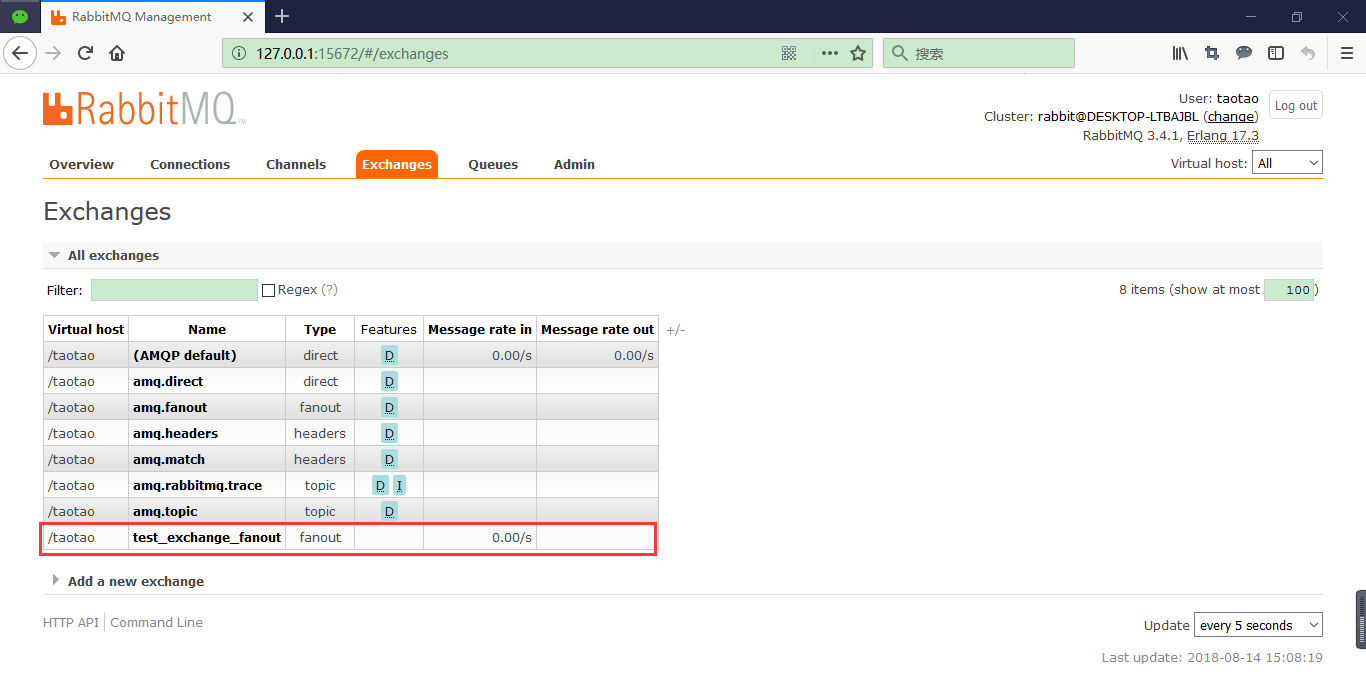
此时
没有绑定队列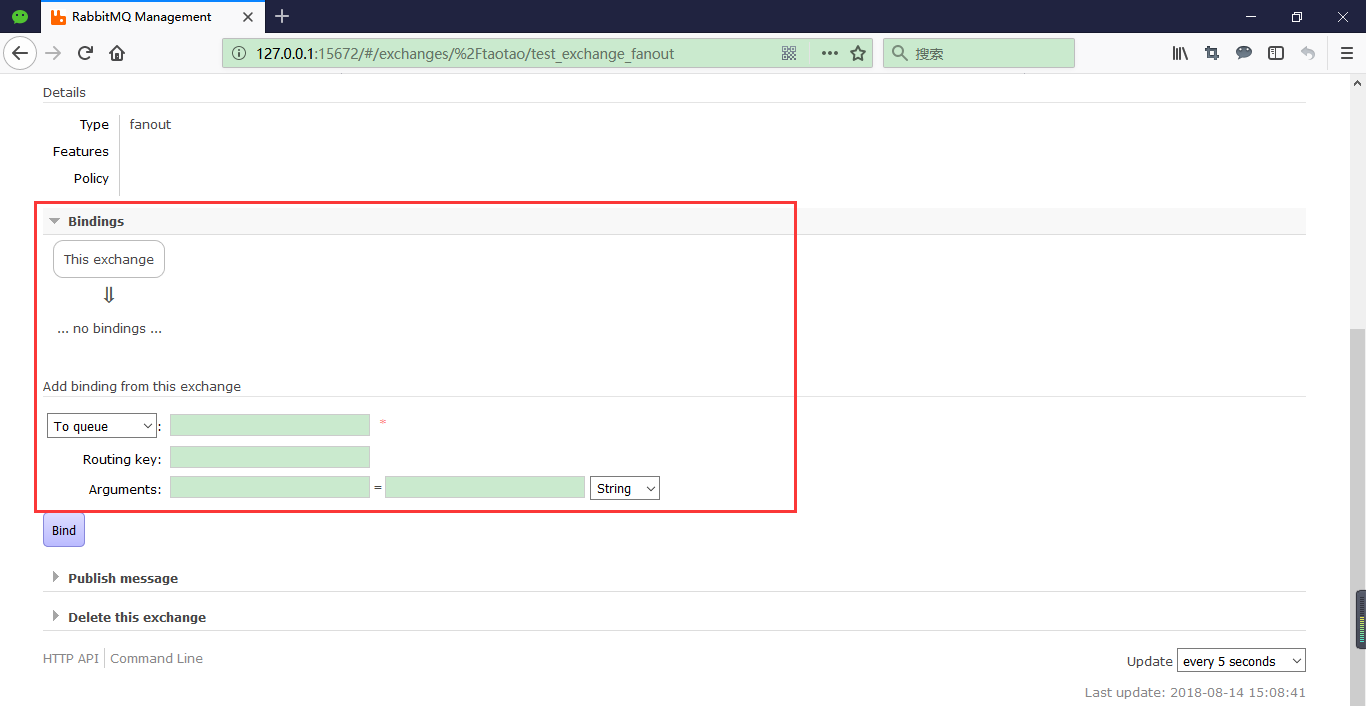
把消息发送到,没有绑定队列的交换机时
消息将会丢失
启动两个消费者
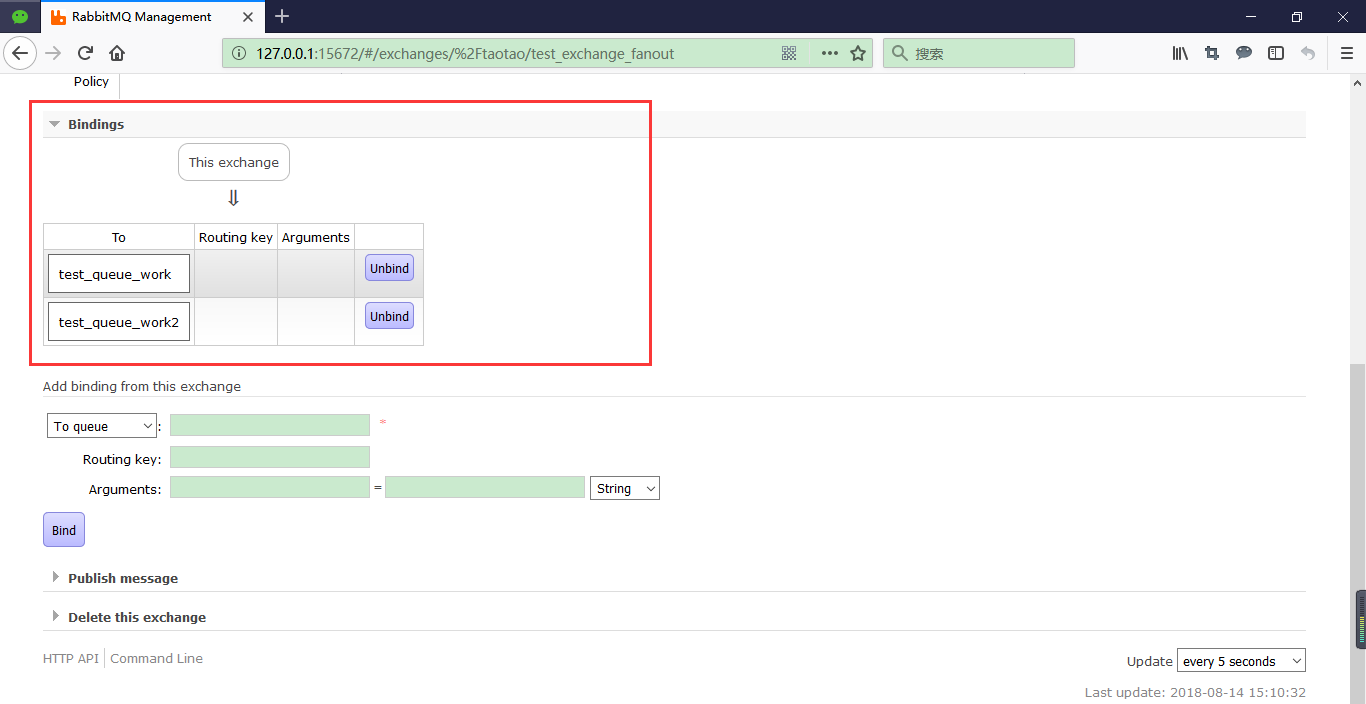
测试
生产者,发送消息
消费者1,拿到了消息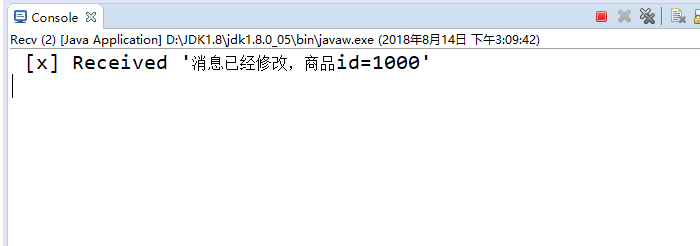
消费者2,拿到了消息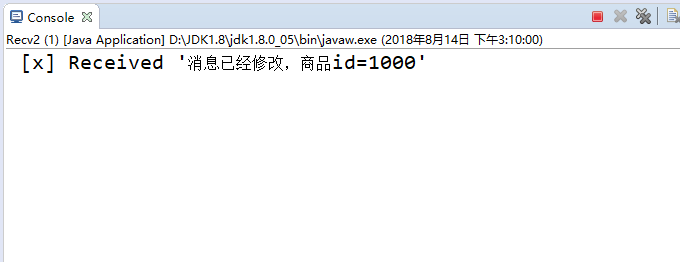
同一个消息
可以被多个消费者获取


























![[ansible]-ansible-playbook执行端口健康检查 [ansible]-ansible-playbook执行端口健康检查](https://image.dandelioncloud.cn/images/20221120/96d30ae461ed48a58ee018395aba0a40.png)








还没有评论,来说两句吧...